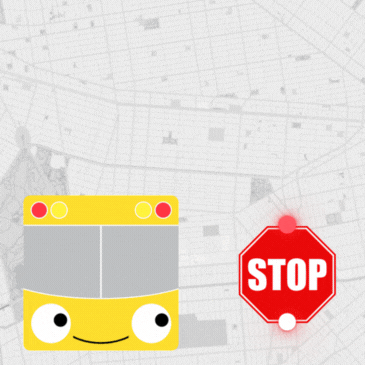
Leave Behind More Than a Headstone
by Today’s Yungerman
I’ve lived on four different blocks in Crown Heights in my 35 years, so let me tell you: the street you’re on makes a big difference to the Crown Heights you experience.
Corner always bustling with action… or wide, quiet sidewalks shaded by trees? Street parking always open… or consecutive driveways that mean you’re circling for hours? Morning traffic from student pedestrians… or early afternoon noise from public school dismissal?
And depending on where you live, you might not see just how much our neighborhood has shifted.
People might not realize it, but there are far fewer young families living and raising kids on blocks such as Crown and Montgomery today. Ever seen the busing routes for a big local school like Oholei Torah? There are 10 morning bus routes for elementary alone… and the “familiar” street names (President, Carroll, Crown, Montgomery) are represented exactly once.
So where are the kids growing up?
The majority of young families with school-age children now live in yehupetz. Midwood and Hawthorne; Remsen and Lenox; the East 30s, 40s and 90s… Streets you once walked past while on tahalucha are now home to a vibrant new chapter of our community.
My wife remembers Wingate High School as the edge of nowhere, with girls walking together for safety as they headed to Bais Rivkah’s production. (Last stop for kosher food: Klein’s grocery.)
Now, Rutland is the new center of town! Or the center of our new town.
As young families expand the borders of Crown Heights in search of available housing, we are also tasked with creating the amenities that support Jewish life. Sure, all the grocery stores deliver by now. But lots of what we take for granted living in a Jewish neighborhood doesn’t come by delivery truck.
For our parents’ generation, shul was never something you had to think much about. You just walked to 770. You didn’t have to worry about membership dues, buying siddurim, or fundraising for basic infrastructure, because it was already there. Same for the nearby shtiebelach, which had been around for decades, benches and long-paid mortgages and all. The biggest expense was the bottle of J&B and herring for kiddush, and maybe payment for the baal koreh.
Past a certain point–both on the map and on the timeline–there are no more old yeshiva buildings or simcha halls for a group of young guys to take over and rename. On our side of town, if you want a mikvah, you dig it yourself. If you want a storefront to daven in, you have to buy it… for millions of dollars.
And pay for the construction to turn that storefront into a shul.
And purchase the chairs, mechitzahs, and paper towels. (And prizes for the kids, because Baruch Hashem there are a lot of kids here!) There are no piles of worn siddurim as old as the building.
The thing is… I’m already paying those unaffordable housing costs that sent me to this part of town to begin with, the grocery store delivery fees, and tuition. Now add shul membership to the list: another expense that my parents and their peers never faced and can’t fathom of.
Yes, in their days, shul was free. So was bread, practically. (Let’s not get started on housing.) It seems like a whole generation benefited from the foundations of the previous ones: they showed up to shuls established before their time and simply maintained those buildings.
But now, with a community bursting at the seams, it’s time for new establishments. New shuls. New buildings.
So, we’re doing it! Anshei Lubavitch purchased two buildings (in addition to renting two) and built a beautiful new shul in that space, complete with a mikvah, two social halls, and classrooms. It hosts 5 minyanim for Shacharis, multiple shiurim each day, and monthly women’s events. And it’s not an exclusive club. This is a shul open 24 hours daily to serve Crown Heightsers and their guests of all ages.
The monthly operating budget for Anshei Lubavitch is tens of thousands of dollars. Not for anything fancy. That’s just the cost of living (and buying and building) in today’s economy.
We’re willing to put in the work to create it. But we can’t do it on our own.
We need your help to continue building Crown Heights.
Will you contribute to the community so that you leave it better, or at least with the same resources, as when you inherited it?
As the Friediker Rebbe wrote in Likutei Dibburim (Shavuous 5694): It’s the nature of man to want to leave a legacy behind so he’s not forgotten from the world. Some people erect a tombstone in the field, with their name inscribed on a rock. This is a “dead matzevah”.
Others leave behind a beis medrash, a shul, a place for living and learning. This is a “living matzevah.”
The previous generations bequeathed upon you the buildings and the resources. Will you do the same for your children and for theirs?
Can you pay it forward, literally, so the community can continue?
Will you help create a shul for your grandkids to attend?
Leave behind a legacy of life, not just a headstone.
Support Anshei Lubavitch… even if you don’t recognize the street it’s on. We are, after all, one neighborhood.













P. McDonald
Do it!! great cause